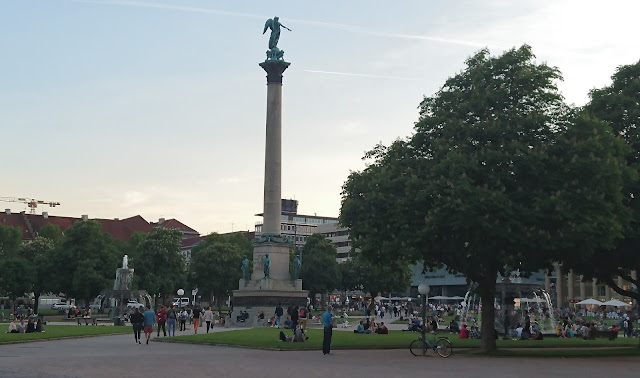 |
| Erasmusbrug on the Maas, Rotterdam |
But what to do then that Sunday? There was afternoon outdoor dancing with music by the amiable Peter of De Plantage (review) at the milonga in the Oosterpark (video) in Amsterdam but I wanted to hear different music.
Someone at the Waterlelie milonga (review) had told me about a milonga in Rotterdam. I was not very interested - Rotterdam being associated in my mind with heavy industry and shipping and an hour away from Amsterdam. My new Dutch friend though described the setting as one of the best places to dance in the Netherlands. Since he travels all round the world for dance I was inclined to listen. I asked what the music would be like. Traditional, he said, decisively.
Still, I swithered. Also at the Waterlelie someone else had told me Rotterdam was known for being a place of tango nuevo. The image on the milonga website, which I did not see until later is a clue. I didn't fancy that but the less I know someone, the more I like to check out those claims for myself. I remember my friend, with twenty-odd years of experience in Buenos Aires shaking her head despairingly when I listened gratefully and still needed to find out for myself. Yet ought I jaunt off to Rotterdam when I had only just arrived and with this marvellous city of Amsterdam to explore? But weekends away for pleasure are not about 'ought' but about doing just as you feel. I was here mostly for dance. Other things like Dutch culture - though they might and indeed probably did end up being the main event - fitted around that.
It wasn't until the Sunday morning itself that the recommendation and curiosity about the other city decided it. Besides, I wanted to see the Dutch countryside from the train. It is utterly flat by the way, very green, full either of cows in fields or greenhouses and all the fields are surrounded by water channels. And no kidding, there really are lots of windmills. I was glad to see it but once is enough. In his book 'Why the Dutch are Different' - which I cannot recommend enough - Ben Coates tells that the reason the Dutch went from being one of the shortest people to one of the tallest in a few hundred years is apparently all that milk and cheese. There is also an interesting section on Dutch character being related to the challenge of dealing with all that water. Next time you're making for your connection in Schiphol recall that was once underwater and notorious for wrecks. These snippets trivialise the book. It is far more interesting than this, written in engaging prose which belies the youth of the writer whose eye is as much on the past as on contemporary culture and whose informed mind ranges over politics, religion, Dutch history, culture, regions, character and football. He married a girl from Rotterdam and lives in the city.
I stepped out of the large, airy, station and felt I had arrived in the future, so new and angular were the buildings. But the public transport employees that I met - in Rotterdam train station ticket hall, around the tram stop and on the tram could not have been more human and friendly. With civic-minded helpfulness the attractive tram lady - confusingly - gently mothered me to the right platform: I showed her my ticket. “Didn’t anyone tell you already you can get a card for all day travel for 7 Euros” she said, aghast at her compatriots apparent lack of attention to a visitor. In fact I had just informed myself exhaustively about all kinds of tickets for future reference, but just hadn't decided my later plans for the day.
To find Wilhelminapier, head for the Hotel New York, well known in the area as the headquarters of the former Holland America Line from which many immigrants departed for America.
I did not feel ignored or looked through in this city. People acknowledged one another. Guys looked at me which spiked my morale. I was sure that come a rainy Monday morning it would be like most other places on such a day and it's true attitude can make all the difference to how people interact with you but I felt merely open-minded. Perhaps this though is what Rotterdammers respond to. Right then this connection between people felt more than just a holiday feeling but if that's all it was, it was more than enough.
To find Wilhelminapier, head for the Hotel New York, well known in the area as the headquarters of the former Holland America Line from which many immigrants departed for America.
 |
| Wilhelminapier |



































